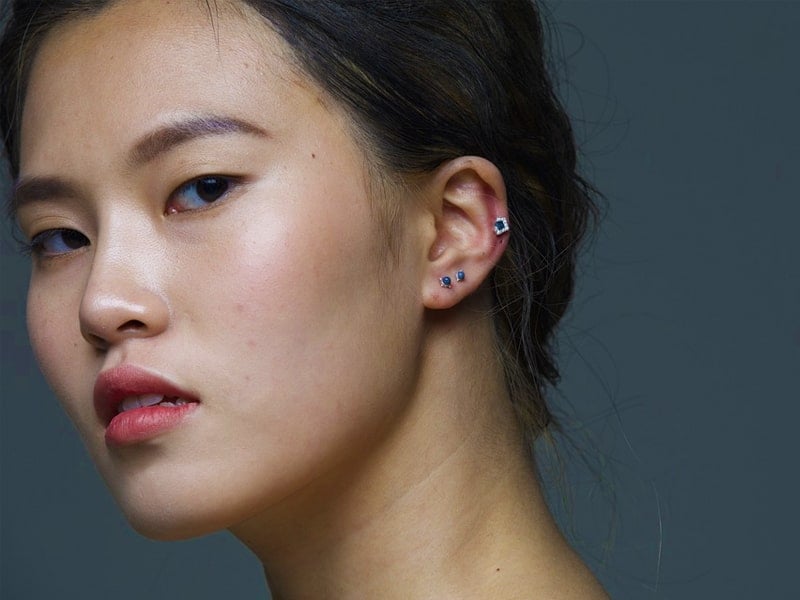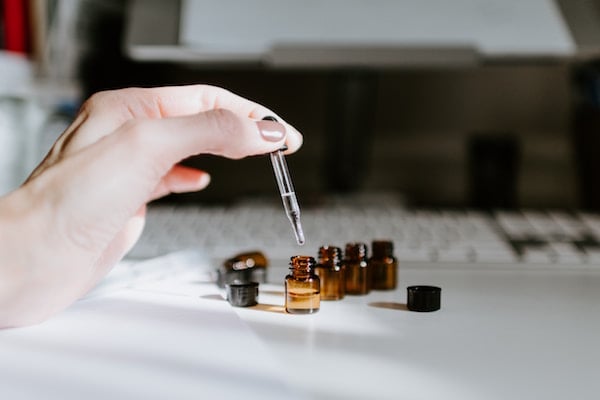
The key to properly healing a piercing is knowing and understanding how wounds heal. Your piercing is basically a controlled wound, and as such, it will heal like other wounds. Just like any other injury, your piercing will be susceptible to scarring.
Hypertrophic scarring is one of the most common piercing scars. But, there’s a lot of misinformation and confusion surrounding hypertrophic scarring. Here’s what you need to know about prevention, identification, and treatment of hypertrophic scarring.
When your body experiences injury, including a piercing, it immediately jumps into healing mode. First, it takes steps to protect your body from blood loss and infection. Then, the rebuilding begins.
Your body produces collagen to act as a foundation for new tissue. Collagen is a fibrous, structural protein that’s essential for healing. However, sometimes your body will produce too much collagen, leading to hypertrophic scarring.
Hypertrophic scarring appears as a raised, ropey bump or line on or next to the piercing site. It will likely be red and somewhat firm. Although you might feel some itchiness or slight pain surrounding it, hypertrophic scarring is largely a cosmetic issue, and you shouldn’t have any adverse medical reactions.
Scarring can occur in anyone. However, some people are more genetically predisposed to scarring. Sometimes, hypertrophic scarring can occur even if you do everything right. If you tend to scar easily, then you should prepare for hypertrophic scarring with your new piercing.
Beyond genetics, there are two main causes of hypertrophic scarring: chemical irritation and trauma. This is why you must keep your piercing away from antibacterial soaps, face wash, rubbing alcohol, or other toiletries with chemicals. You also need to make sure that you mess with your jewelry as little as possible, and never rotate your jewelry.
Since the two main causes of hypertrophic scarring are chemical irritation and physical trauma, it would make sense that the best way to avoid hypertrophic scarring is to avoid those two things.
Here are some tips to avoid hypertrophic scarring:
Hypertrophic scars often appear within the first 4 to 8 weeks of healing. Once they appear, they could change and grow over the next few months. It will probably take up to a year for the scar to fully mature, since that’s roughly the amount of time that it takes for your tissue to fully heal.

Since hypertrophic scars take so long to fully mature, your piercer might recommend waiting for a year before seeking treatment options. Attempting treatment on a scar that’s still healing could cause further issues.
Once your scar has fully healed, recommended treatment is often patience. Hypertrophic scars usually shrink on their own, and it’s likely that in a few years, your hypertrophic bump will be nothing more than a barely noticeable spot next to the piercing.
Other treatments include putting pressure on the scar to help break down the collagen, using tea tree oil to minimize its appearance, or using scar creams. If the scarring is extreme enough, you can also seek laser treatments.
Do not pursue treatments that your piercer hasn’t recommended. Before starting any at-home treatment, talk to your piercer. Certain scar creams and other products can cause more harm than good, and your piercer will be able to give you personalized recommendations based on the size and location of your scar.
Overall, the best treatment is time. It’s difficult to have to wait, especially when you’re excited about your new piercing, but if you start treating the scar too soon, or if you choose the wrong treatments for your scar, you could be making matters worse.
Keloids tend to be a largely misunderstood issue, and too often, hypertrophic scarring is mistaken as keloid scars.
Keloids are a hereditary issue. While both hypertrophic scars and keloids are formed when too much collagen is produced during healing, their similarities stop there.
Hypertrophic scarring won’t raise higher than 4mm above the skin. Keloids are typically much larger.
Hypertrophic scarring will minimize on its own over time. Keloids require medical attention to remove.
Hypertrophic scarring appears as a small line or bump. Keloids manifest as a bulbous mass.
Basically, if you’re wondering whether you’re developing a hypertrophic scar or a keloid, it’s almost definitely a hypertrophic scar. If you develop a keloid, there is no doubt.
Hypertrophic scars can be an unfortunate side effect of healing, but developing a scar doesn’t spell a death sentence for your new piercing. Simply wait for it to heal, talk to your piercer about potential treatments, and give it time. Eventually, you’ll forget it was ever an issue.
One Reply to “The Ultimate Guide to Hypertrophic Scar Identification, Treatment, and Prevention”
Brittany Phillips, 06 Jan 2020
I recently had surgery and have hypertrophic scarring. I have been using Dermalmd scar treatment serum now for about 3 months along with some other healing cream the surgeon gave me. My scars are starting to get less bumpy and taking nicely. You must use dermalmd serum multiple times per day religiously to see results but it works!